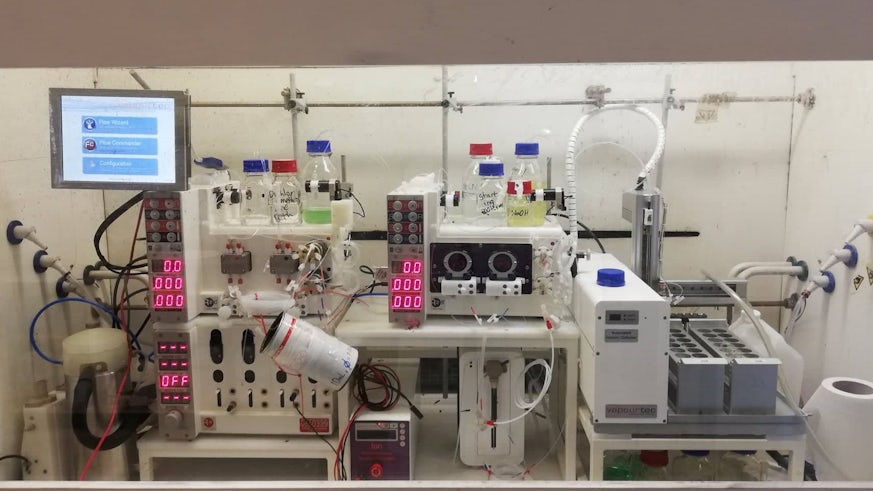Fluorine Chemistry goes with the flow
21 September 2021

A team of researchers at the School of Chemistry has been working to improve the challenging process of working with fluorine so that it can be more efficiently and safely prepared for the synthesis of molecules with medical applications.
When most people think about uses for the element fluorine, they think of the fluoride contained in toothpaste that helps protect our tooth enamel. However, the applications are much broader, with almost one third of the top performing medicinal drugs on the market containing a fluorine atom in their structure. For instance, lansoprazole (Prevacid), regulates stomach acid, and Fluoxetine (Prozac), is a widely used anti-depressant.
Fluorine is the most reactive chemical element we have and controlling its chemistry in the production of these molecules for medicine is a challenge. “Fluoride” is fluorine that has reacted to form a compound with another element ( usually sodium when used in toothpaste ) and then it becomes so tightly bound to its partner that it is difficult to extract. To make the carbon-fluorine bonds required for medical applications chemists usually have to work with the reactive element itself (F2) or with the highly corrosive acid (HF). Using these in the large volumes required for drug production is highly challenging with stringent safety measures using costly apparatus.
Researchers in the School of Chemistry have now shown how a re-think of fluorine chemistry using a flow reactor approach can greatly improve the efficiency with which carbon-fluorine bonds are formed and at the same time ensure the reactions are run safely with much lower overheads on the equipment used. In the standard chemical approach large volumes of reagents are mixed together and left to react for some time before products are isolated and removed. In a flow approach reactants are only mixed as they are required, keeping the amount of highly reactive fluorine to a minimum at any time. In the new flow reactor HF is converted to an intermediate compound containing both fluorine and iodine, keeping the fluorine sufficiently available to react with carbon atoms. The carbon-fluorine bond is formed quickly after this intermediate is made so that the intermediate never builds in concentration.
The team developing the method is lead by Prof. Thomas Wirth who believes it will find widespread use in the pharmaceutical industry and anywhere that chemists require efficient, safe formation of carbon-fluorine bonds. PhD student Bethan Winterson and visiting Erasmus student Tim Renningholtz worked together to implement the flow reactor and associated computer control that orchestrates the chemistry.
To find out more please see: https://pubs.rsc.org/en/content/articlelanding/2021/SC/d1sc02123k